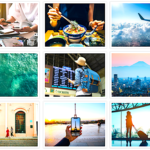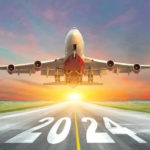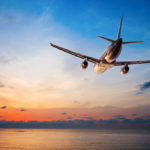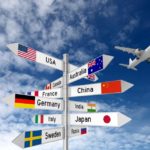“Trending in Travel,” a new global report put together by World Travel & Tourism Council (WTTC) and Trip.com shows that traveler behavior and future booking patterns in the wake of COVID-19 are expected to take an interesting turn: International spending is expected to rise 94% in 2022.
Granted, the study was released in late November, some days before the Omicron variant became widely known. However, the added extra layer of concern as people prepare for December and January trips has been quelled by statements from the Centers for Disease Control. The wisdom remains, if you’re vaccinated, you shouldn’t have to change your holiday plans — even with Omicron circulating in the United States, according to Dr. Anthony Fauci, director of the National Institute of Allergy and Infectious Diseases.
“If you have a vaccinated situation, your family is vaccinated, enjoy the holidays indoors with your family,” Fauci said on a CNN Global Town Hall earlier this month. Traveling may increase the risk of getting infected, he noted, but wearing a mask and getting vaccinated and boosted can make the difference in traveling safely.
Meanwhile, the WTTC’s latest projections that show strong growth in international spending for 2022 and beyond, are projected to overtake domestic spending in 2022, as more destinations ease restrictions and vaccination rates continue to rise.
Following a 69.4% decline (2020), global international spending on travel is set to rise by 9.3% in 2021, and significantly by 93.8% in 2022.
The report also reveals how severe and confusing travel restrictions around the world have resulted in a significant rise in domestic tourism, with a surge in domestic hotel bookings of more than 200% on Trip.com’s platform this year compared to 2019.
Since the start of the pandemic, mobility restrictions have hindered international travel and, although domestic travel will provide a much-needed boost to the sector, WTTC says the return of international travel is critical to rebooting the global economy.
The report focuses on booking trends, consumer considerations and consumer profiles. It also features examples of markets whose resilience has provided a platform for the recovery of the Travel & Tourism sector.
The report shows how COVID-19 has changed the way people travel; younger travelers are the first to return to travel; increased demand for longer stays; the importance of fee-free cancellations and the demand for high levels of health and safety checks.
To circumvent travel restrictions, travelers are seeking secondary destinations, away from traditional holiday spots, as their destination of choice. According to Trip.com’s hotel booking data, Abu Dhabi (UAE) Chiang Mai (Thailand), Doha (Qatar), Florence (Italy) and Frankfurt (Germany) were the most popular secondary destinations in their respective countries in 2021.
The report goes on to show that, according to Ctrip data, bookings for “the great outdoors” will predominate in the short and medium term. The pause in travel has also heightened consumers’ eagerness to travel more sustainably with more than eight out of 10 (83%) global travelers saying they would make sustainable travel a priority in the future.
According to the report, 70% of travelers in many major countries such as the U.S., Spain, the UK, Canada and Japan plan to spend more on travel in 2022 than they have in the last five years, including 2019 – one of the best years on record for Travel & Tourism.
Latest WTTC research shows the global recovery of the Travel & Tourism sector is picking up pace with the sector’s contribution to global GDP projected to rise by 30.7% in 2021 and 31.7% in 2022. The Americas continue to lead the overall recovery with 36.8% projected growth of Travel & Tourism GDP this year, led by the Caribbean (47.3%) and North America (37.9%).
The World Travel & Tourism Council includes some 200 CEOs, Chairs and Presidents of the world’s leading travel & tourism companies from all geographies covering all industries.
According to WTTC’s 2021 Economic Impact Report, during 2020, a year in which it was devasted by the COVID-19 pandemic, Travel & Tourism made a 5.5% contribution to global GDP and was responsible for 272 million jobs.


































































Get Social